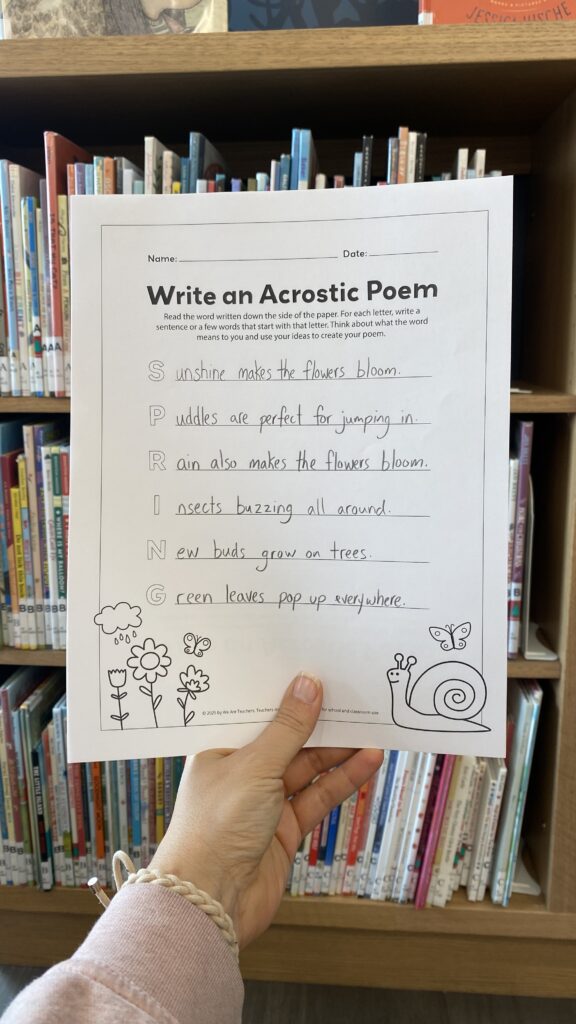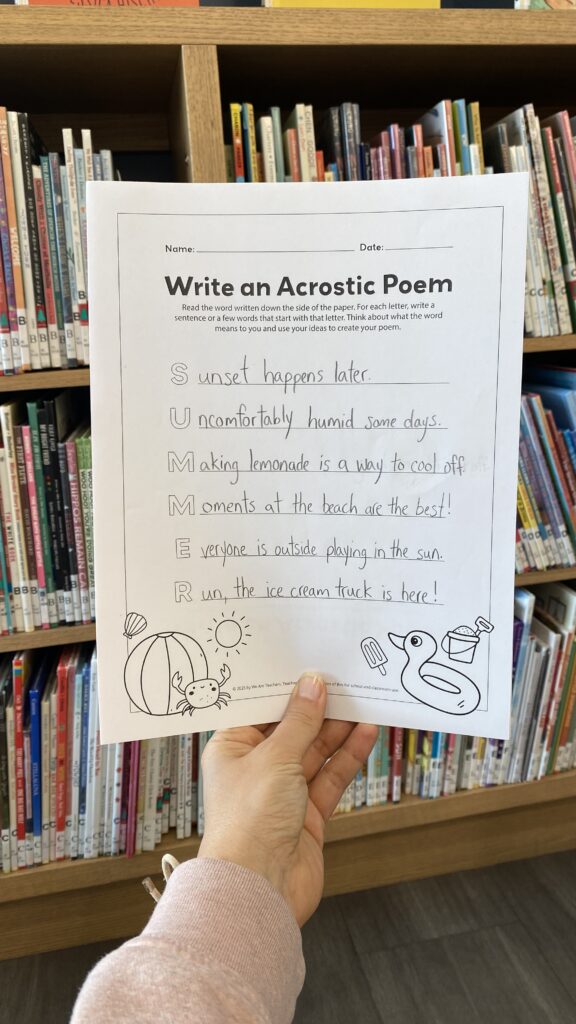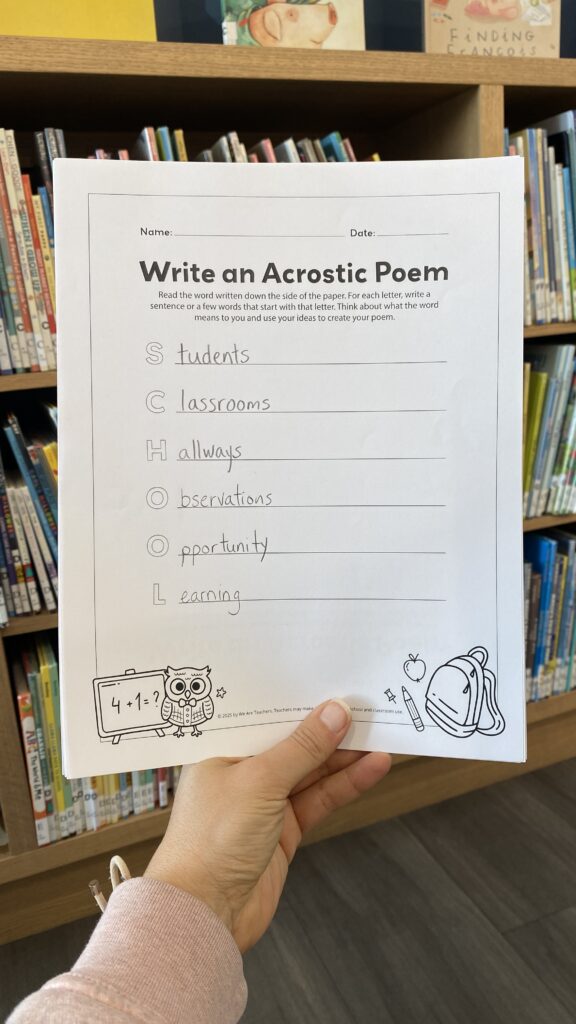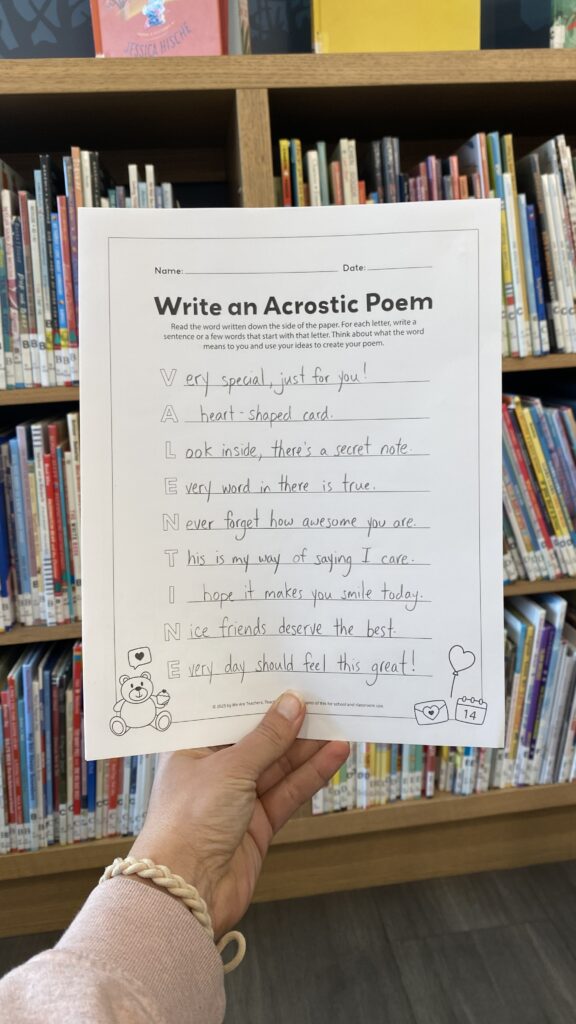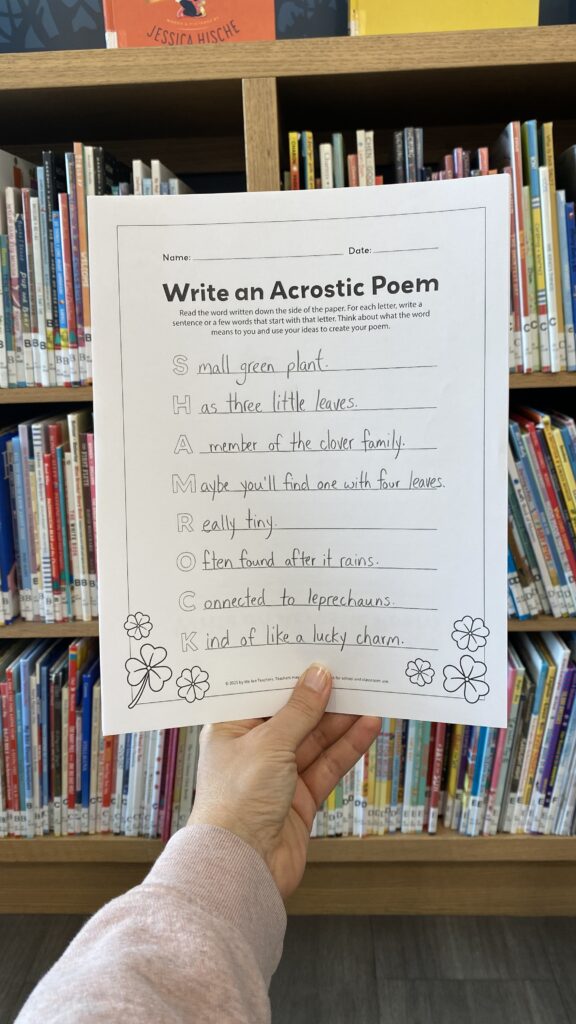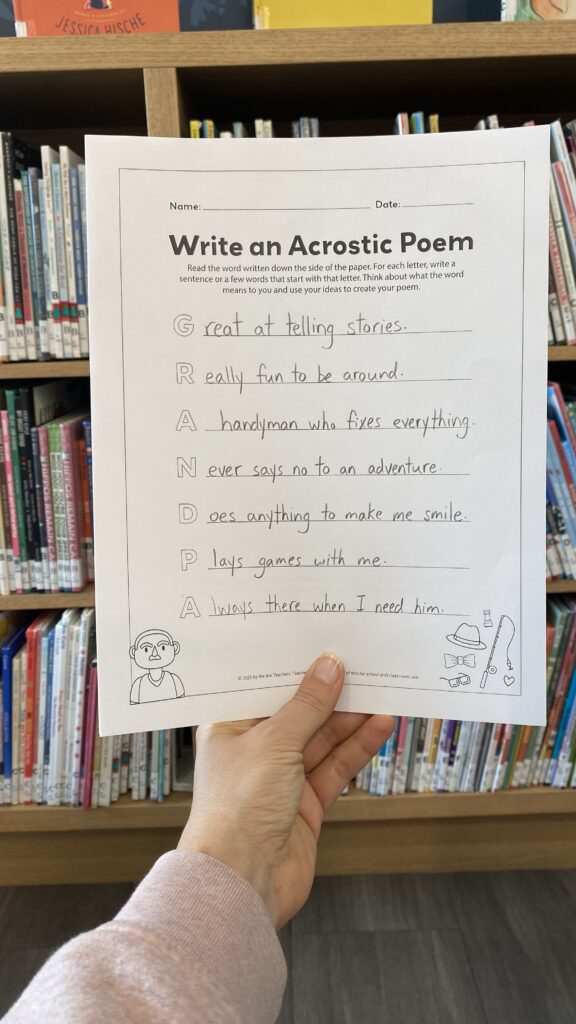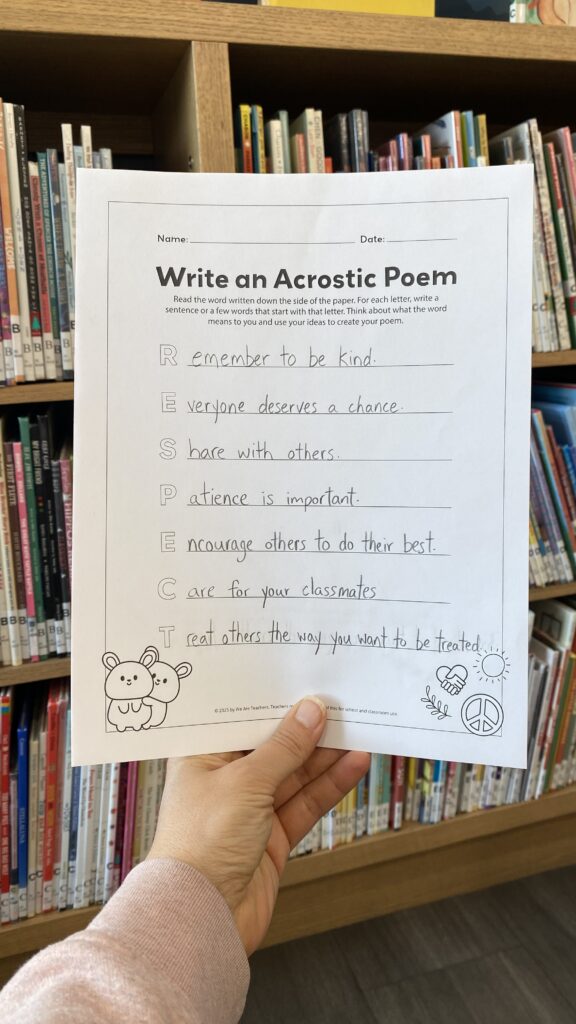How To Write Acrostic Poems: Examples and Templates

Looking for a fun and easy way to introduce poetry to your students? Acrostic poems are a perfect starting point. They’re simple, engaging, and a great way to build creativity and confidence in young writers. Plus, acrostic poems are appealing to all ages—whether as a fun classroom activity or a thoughtful, personalized gift. No matter the occasion, they’re a great way to play with words.
Click the button below to receive your free printable bundle with more than a dozen acrostic poem templates, including all of the templates pictured below!
Acrostic Poems Explained
An acrostic poem is a creative type of poetry in which the first letter of each line, when read vertically, spells out a word, phrase, or name. Each line connects to that word, making it an engaging way to express ideas, describe something meaningful, or play with language.
Acrostic poems can be simple or detailed—whether they’re writing about their favorite animal, the changing seasons, or a special memory, the possibilities are endless! Best of all, there are no strict rules, so kids can be as imaginative as they like while writing their acrostic poems.
How To Write an Acrostic Poem
Writing an acrostic poem is simple and always a crowd-pleaser! Just follow these easy steps.
1. Choose the topic
Decide on a topic for the acrostic poem. The topic could be something students are studying in class, such as planet Earth, fractions, or the periodic table of elements. It could also be a personal interest, such as a favorite animal, musical inspiration, or Olympic sport. Once a topic is chosen, students can start brainstorming related words.
For example, let’s choose the topic “planet Earth.”
2. Choose a word
Pick a word that relates to the topic. Its letters will form the foundation of the acrostic poem. Shorter words work best for beginners, keeping the activity engaging and manageable. For those looking for more, longer words can add an extra challenge.
If the topic is planet Earth, for example, students might brainstorm words like ocean, forest, or climate—terms that connect to the theme and can be used in their poem. For this explanation, let’s go with the word ocean.
3. Write the word vertically
The word has been chosen, so now it’s time to put pencil to paper and bring this acrostic poem to life. Write the chosen word vertically down the page, providing the structure for the acrostic poem. For example, using the word ocean, it will look like this:
O
C
E
A
N
4. Brainstorm ideas for each line
Think about your chosen word and what it represents. Jot down words, phrases, or sentences that describe it or create a vivid image.
For example, for the word ocean, students may jot down ideas like: “deep blue waves,” “underwater exploration,” and “so many sea creatures living beneath the surface.”
5. Write a sentence for each letter
Students write a sentence or phrase starting with every first letter of the word spelled vertically. Sentences should describe or relate to the word (and topic) in a creative or meaningful way.
For example, for the word ocean, the lines for the acrostic poem could be:
Over 70% of the Earth is covered in oceans.
Countless creatures call this place home.
Every day the tide goes in and out.
Amazing ecosystems, like coral reefs, are found below sea level.
Navigating the deep ocean is still a mystery to explorers.
Alternatively, you can create an acrostic poem using just one word for each letter of your chosen word. This is a simple way to get started and still capture the essence of your topic. For example, for the word ocean, you could use:
Open
Currents
Endless
Adventure
Nature
Acrostic Poem Templates and Examples
Get My Free Printable Templates
It’s easy to get started writing acrostic poems with our free bundle of acrostic poem templates, including all the templates pictured above. Perfect for classrooms, homeschool projects, or fun family activities, these templates help guide young writers through the creative process.
Source link



